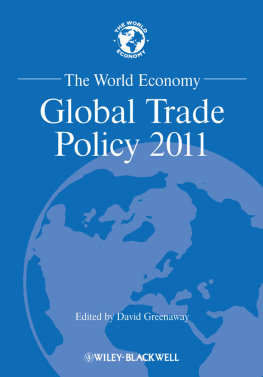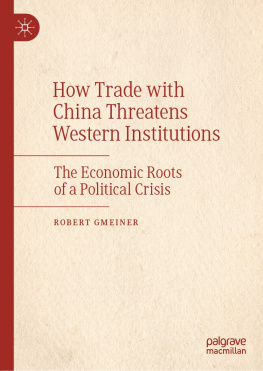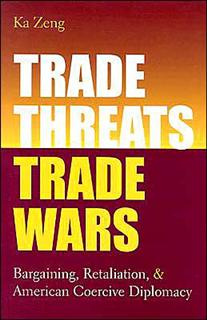Trading Freedom
American Beginnings, 15001900
A Series Edited by Edward Gray, Emma Hart, Stephen Mihm, and Mark Peterson
Also in the series:
Wives Not Slaves: Patriarchy and Modernity in the Age of Revolutions
by Kirsten Sword
Accidental Pluralism: America and the Religious Politics of English Expansion, 14971662
by Evan Haefeli
The Province of Affliction: Illness and the Making of Early New England
by Ben Mutschler
Puritan Spirits in the Abolitionist Imagination
by Kenyon Gradert
Trading Spaces: The Colonial Marketplace and the Foundations of American Capitalism
by Emma Hart
Urban Dreams, Rural Commonwealth: The Rise of Plantation Society in the Chesapeake
by Paul Musselwhite
Building a Revolutionary State: The Legal Transformation of New York, 17761783
by Howard Pashman
Sovereign of the Market: The Money Question in Early America
by Jeffrey Sklansky
National Duties: Custom Houses and the Making of the American State
by Gautham Rao
Liberty Power: Antislavery Third Parties and the Transformation of American Politics
by Corey M. Brooks
The Making of Tocquevilles America: Law and Association in the Early United States
by Kevin Butterfield
Planters, Merchants, and Slaves: Plantation Societies in British America, 16501820
by Trevor Burnard
Riotous Flesh: Women, Physiology, and the Solitary Vice in Nineteenth-Century America
by April R. Haynes
Holy Nation: The Transatlantic Quaker Ministry in an Age of Revolution
by Sarah Crabtree
A Hercules in the Cradle: War, Money, and the American State, 17831867
by Max M. Edling
Frontier Seaport: Detroits Transformation into an Atlantic Entrept
by Catherine Cangany
Beyond Redemption: Race, Violence, and the American South after the Civil War
by Carole Emberton
A complete list of series titles is available on the University of Chicago Press website.
Trading Freedom
How Trade with China Defined Early America
Dael A. Norwood
The University of Chicago Press
CHICAGO & LONDON
PUBLICATION OF THIS BOOK HAS BEEN AIDED BY A GRANT FROM THE BEVINGTON FUND.
The University of Chicago Press, Chicago 60637
The University of Chicago Press, Ltd., London
2022 by The University of Chicago
All rights reserved. No part of this book may be used or reproduced in any manner whatsoever without written permission, except in the case of brief quotations in critical articles and reviews. For more information, contact the University of Chicago Press, 1427 E. 60th St., Chicago, IL 60637.
Published 2022
Printed in the United States of America
31 30 29 28 27 26 25 24 23 22 1 2 3 4 5
ISBN-13: 978-0-226-81558-9 (cloth)
ISBN-13: 978-0-226-81559-6 (e-book)
DOI: https://doi.org/10.7208/chicago/9780226815596.001.0001
Library of Congress Cataloging-in-Publication Data
Names: Norwood, Dael A., author.
Title: Trading freedom : how trade with China defined early America / Dael A. Norwood.
Other titles: American beginnings, 15001900.
Description: Chicago : University of Chicago Press, 2022. | Series: American beginnings, 15001900 | Includes bibliographical references and index.
Identifiers: LCCN 2021019314 | ISBN 9780226815589 (cloth) | ISBN 9780226815596 (ebook)
Subjects: LCSH: United StatesCommerceChina. | ChinaCommerceUnited States. | United StatesRelationsChina. | ChinaRelationsUnited States.
Classification: LCC HF3128 .N67 2022 | DDC 382.0973/051dc23
LC record available at https://lccn.loc.gov/2021019314

This paper meets the requirements of ANSI / NISO Z39.48-1992 (Permanence of Paper).
In memory of my father, Dan Norwood. In honor of my mother, Phyllis Humphrey Norwood. And for Michelle, always.
Contents
Americas Business with China
Figure 1. An early nineteenth-century view of the Floating City on the Pearl River (Zhujiang) at Canton (Guangzhou), with the foreign factories in the background. William Daniell, The European Factories, Canton, 1806, oil on canvas, https://collections.britishart.yale.edu/catalog/tms:720, Yale Center for British Art, Paul Mellon Collection, B1981.25.210.
Fifty-seven years after he visited Canton (Guangzhou), Thomas Handasyd Perkins remembered the riverboats vividly. Craft of all sizes, from a canoe to vessels holding fifty persons or more crowded the waterways of the busy cosmopolitan city on the Pearl River, impressing and disorienting the young Boston merchant. Just twenty-five when he visited Canton, Perkins had spent nearly his entire life in the port cities of the Atlantic world, where harbors forested with masts were a familiar sight. But Cantons junks, barges, and sampans he pronounced beyond reckoning. These boats of all descriptions, he told his children, may be termed Legionsuch is their number.
Perkins never again visited China after that first trip, which he made as the supercargo for the Salem ship Astrea in 178990, but it makes sense that it was a river view that stuck with him in his later years. For foreign merchants like him, a visit to China was primarily an experience of navigating the curves, customs, and regulations of the Pearl River. Screened from the open ocean by sixty miles of inland navigation, Canton was the only Qing port open to foreign traders, who could access it only during the annual trading season (late summer to early winter), and only if they successfully negotiated the physical and bureaucratic hurdles that interrupted the rivers course. The Canton systemforeigners name for the way the Qing Empire organized and regulated foreign tradeproduced a peculiarly riparian perspective on China, at least among Americans.
Although citizens of the new republic first encountered the Canton system near its high tide, it had emerged piecemeal over the early eighteenth century, the result of negotiations between the employees of European East India companies, local Chinese merchants, and Qing imperial officials. Never perfect or complete in execution or design, it functioned flexibly for nearly a century and a half before the conflagration of the First Opium War (183942) destroyed it, replacing it with the Treaty Port system, named for the treaties that Western powers forced on the Chinese opening dozens of ports to foreign traders. Although later in life Perkins played a role in destroying the Canton system, when he arrived in 1789 it was still in full operation.
Figure 2. A detailed sketch of the Pearl River Delta, with key points in the China trade marked, including Macao, Lintin Island, Whampoa, and Canton. Edward Belcher and John Walker, Canton and Its Approaches, Macao and Hong Kong, 1856, https://purl.stanford.edu/sw365qv6908, courtesy of David Rumsey Map Collection, David Rumsey Map Center, Stanford Libraries.







 This paper meets the requirements of ANSI / NISO Z39.48-1992 (Permanence of Paper).
This paper meets the requirements of ANSI / NISO Z39.48-1992 (Permanence of Paper).
